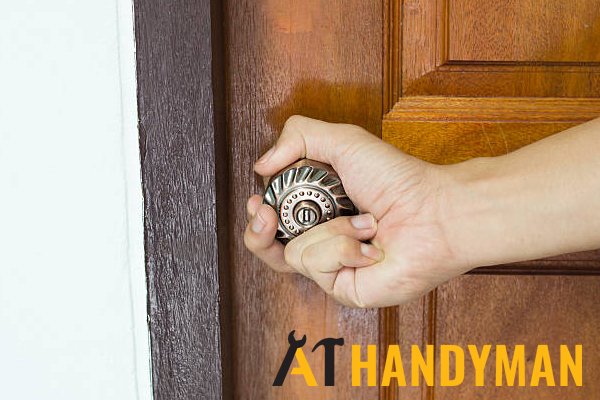
Door knobs are more than just handles; they’re essential for keeping your home secure. If you have a knob from a popular brand like Schlage or Kwikset, understanding how to troubleshoot this issue can save you time and a potential trip to the hardware store. Let’s break down what could cause that squishy feeling and how you can fix it without needing a handyman.
Understanding Why Your Door Knob Feels Squishy
When you notice a squishy door knob, it’s usually a symptom of a few key problems. Here’s the thing: door knobs are made up of various components, and if one of those components isn’t functioning correctly, the entire mechanism can feel off. This squishiness often indicates a loose screw or an internal component that isn’t operating as it should.
Typically, the problem lies within the set screws that hold the knob in place. If these screws are loose, the knob might move freely, causing the squishy sensation. Additionally, the internal mechanisms, such as the latch or spindle, can wear out over time, leading to a less secure feel when turning the knob.
If you’re curious about how to diagnose your door knob’s issue, the first step is to closely examine it. Grab a flashlight and look for any visible signs of wear or looseness. Pay attention to how the knob feels when you turn it: does it rotate too easily? Does it feel like it’s wobbling? These clues will help you pinpoint where the issue may lie.
Common Problems Behind a Squishy Door Knob
Now that we’ve identified potential causes, let’s dive deeper into the common problems that lead to a squishy door knob.
- Loose Screws: Often, the easiest fix is the most likely culprit. Sometimes, during regular use, screws can gradually loosen. This results in your door knob feeling less stable when turned.
- Worn-out Internal Mechanism: Over time, the internal parts of the knob can wear out, especially with frequent use. If your knob feels squishy, it may be indicative of worn parts that need replacing.
- Misaligned Parts: If your door knob is misaligned, it might not engage with the latch properly. This misalignment can create a sensation of squishiness as you turn the knob.
- Lubrication Issues: Sometimes, a lack of lubrication in the internal mechanism can cause resistance. This imbalance can contribute to that squishy feel.
Recognizing these issues can help you avoid unnecessary repairs in the future. You might be wondering, “How do I know what’s wrong with mine?” Knowing the signs is half the battle.
How to Troubleshoot Your Door Knob
Tackling a squishy door knob can seem daunting, but with a few simple steps, you can troubleshoot the problem like a pro. Here’s how to do it:
1. Check the Screws: Start by inspecting the set screws on your door knob. Use a screwdriver and gently tighten them. Be careful not to overdo it—too tight can cause more problems than it solves.
2. Inspect the Mechanism: If tightening screws doesn’t resolve the squishiness, it’s time to take a closer look inside the knob. Remove the knob from the door by unscrewing it completely. Check for any signs of wear or damage.
3. Realign Components: Once you have the knob off, check if the internal components are misaligned. Make sure everything fits snugly, and adjust as needed before reassembling.
4. Lubricate the Mechanism: If the knob still feels squishy after checking for wear and alignment, consider applying a bit of lubricant to the internal mechanism. A silicone-based lubricant works best since it doesn’t attract dust and debris.
By following these steps, you’ll often be able to resolve the squishiness without the need for a replacement. If these troubleshooting tactics don’t work, there might be deeper issues at play.
When to Replace Your Door Knob
Not all squishy door knobs can be fixed. Sometimes, the wear and tear is too extensive, and a replacement is in order. Here are a few signs that it might be time for a new knob:
– Severe Damage: If the mounting plate or latch is broken or cracked, no amount of tightening will help. It’s best to replace these components to ensure security.
– Older Mechanism: If your door knob is older than five years, it may simply be time for an upgrade. Newer knobs often come with improved technology and security features.
– Frequent Issues: If you find yourself fixing the knob repeatedly, investing in a new one can save you time and hassle in the long run.
Choosing a replacement knob can also be fun! There are numerous styles, finishes, and features to consider, from traditional to contemporary designs.
Preventing Future Squishy Door Knobs
Once you’ve fixed your door knob, you’ll want to take steps to prevent future issues. Here’s how:
– Regular Maintenance: Periodically check and tighten screws, and lubricate the mechanism every few months. This small effort can go a long way.
– Choose Quality Products: Investing in higher-quality knobs can reduce the likelihood of wear and tear. Brands like Schlage or Kwikset often have durable options that can withstand daily use.
– Limit Excessive Force: Being gentle with your door knobs can extend their life. Avoid slamming doors or forcing the knob, as this accelerates wear.
By keeping an eye on your door knobs and performing routine maintenance, you can enjoy a more reliable and sturdy feel for years to come.
A squishy door knob may seem like a minor nuisance, but understanding how to troubleshoot it can save you from bigger headaches down the line. By identifying the cause, taking the right steps to fix it, or knowing when to replace it, you can keep your home secure and functioning smoothly. Remember, a little bit of maintenance goes a long way to ensure your door knobs are always in tip-top shape. Happy fixing!